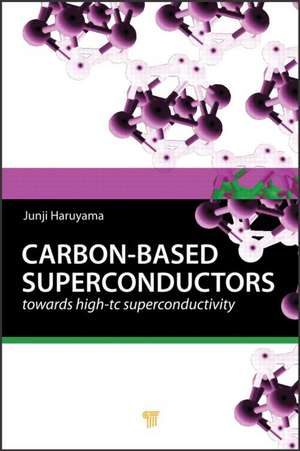Carbon-based Superconductors: Towards High-Tc Superconductivity
Editat de Junji Haruyamaen Limba Engleză Hardback – 16 dec 2014
A small mass of carbon can produce high phonon frequency and high Debye temperature. Combining these with other specified properties of CNSCs (such as one-dimensional electronic states) is highly expected to open doors to high-Tc superconductivity like those of CuO2- and Fe-based SCs, which were the only SCs to show Tc > 40 K in the past. CNSCs, such as diamond, graphite, carbon nanotubes, fullerenes, and others, are a very attractive field of research, and this book is the first to describe their basic physics and the recent advances toward high Tc in this field.
Preț: 655.22 lei
Preț vechi: 878.12 lei
-25% Nou
Puncte Express: 983
Preț estimativ în valută:
125.39€ • 136.16$ • 105.33£
125.39€ • 136.16$ • 105.33£
Comandă specială
Livrare economică 02-16 aprilie
Doresc să fiu notificat când acest titlu va fi disponibil:
Se trimite...
Preluare comenzi: 021 569.72.76
Specificații
ISBN-13: 9789814303309
ISBN-10: 9814303305
Pagini: 316
Ilustrații: 101 black & white illustrations, 22 colour illustrations
Dimensiuni: 152 x 229 x 23 mm
Greutate: 0.59 kg
Ediția:New.
Editura: Jenny Stanford Publishing
Colecția Jenny Stanford Publishing
ISBN-10: 9814303305
Pagini: 316
Ilustrații: 101 black & white illustrations, 22 colour illustrations
Dimensiuni: 152 x 229 x 23 mm
Greutate: 0.59 kg
Ediția:New.
Editura: Jenny Stanford Publishing
Colecția Jenny Stanford Publishing
Public țintă
Academic and PostgraduateCuprins
Introduction of Condensed Matter Physics; Spin-state Crossover; Li Ion Battery; Huge Thermoelectric Power; Room-temperature Ferromagnetism; Partially Disordered Antiferromagnetic Transition; Superconductivity; Transport Properties Combined with Charge, Spin, and Orbital; Magnetoresistance and Spin Blocade; Intrinsic Inhomogeneity; Move/diffuse and Charge/discharge Effect.
Descriere
This book describes basic physics and the recent advancement of carbon-based superconductors (CBSCs), such as diamond, graphite, graphene, carbon nanotubes (CNTs), and others. The small mass of carbon atoms provides high phonon frequency, high Debye temperature, and chances to high superconducting transition temperature (Tc). Individual materials also provide different mechanisms and chances to high Tc. Consequently, it is highly expected that CBSCs will open the door to high-Tc superconductivity, for example, CuO2-based SCs.
